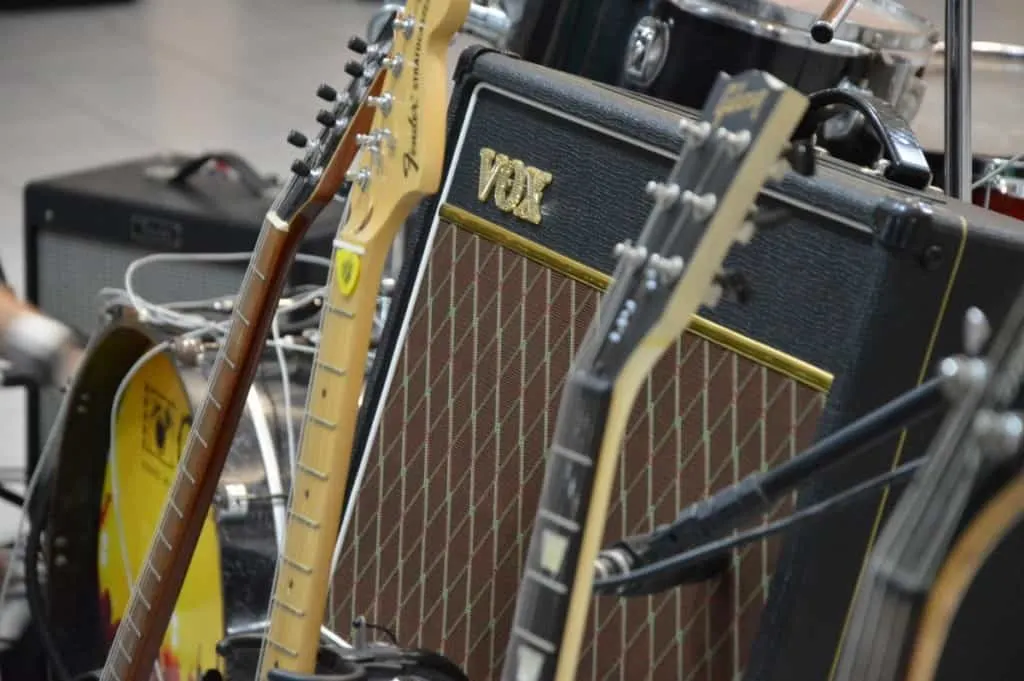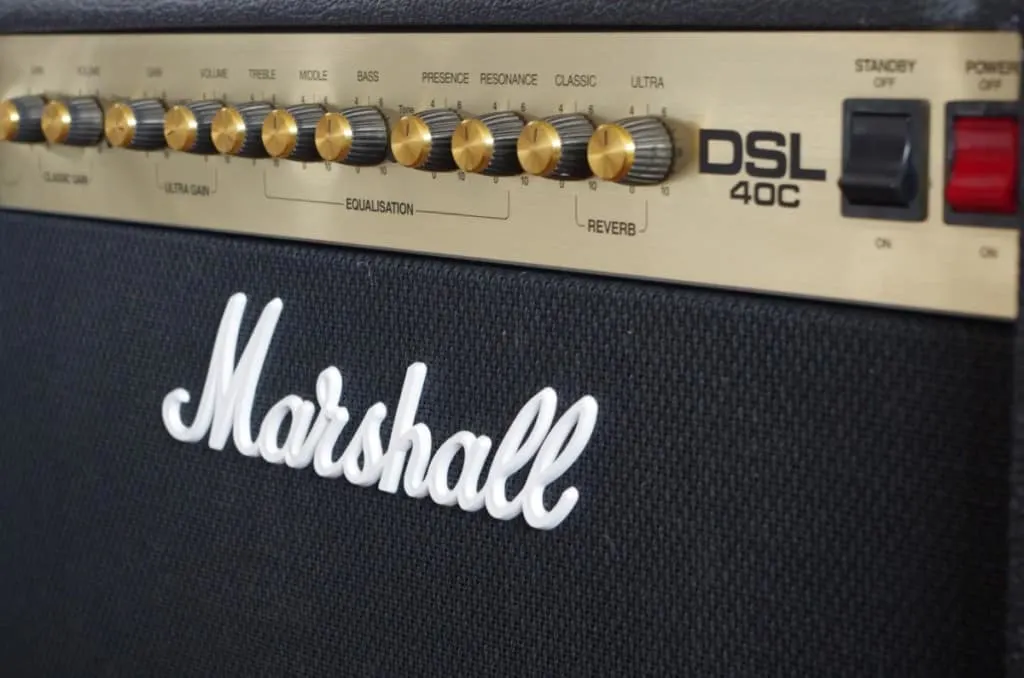In the same way that the choice of pickups, strings, and effects pedals affects a guitarist’s tone, preamp tubes also have a significant impact. When it comes to replacing these tubes, certain questions need to be addressed.
Do preamp tubes need to be biased?
Unlike power tubes, it doesn’t matter whether or not preamp tubes are biased, or if they are used in matched pairs. Providing the preamp tube is the same model as the one it’s replacing, there’s no need to worry about whether it is biased or not.
Despite the straightforward answer to this question, there’s more to explore surrounding preamp tubes and biasing.
When you decide to replace your preamp tubes, some basic rules need to be followed to ensure that no problems occur. In the rest of this detailed article, we’ll look into why preamp tubes don’t need to be biased, and the other measures that need to be taken when replacing them.

Why Preamp Tubes Don’t Need To Be Biased
Almost all preamp tubes are classed as cathode biased. This means they are automatically biased somewhere comfortably within the middle of their operating range. Due to the minimal amount of power that preamp tubes use, bias is not a necessity for them to operate effectively.
In the vast majority of cases, preamp tubes are self-biasing.
Therefore, there’s no need to tamper with the bias at all, even when replacing the tubes with a new set. A mechanism called a fixed resistor takes care of the biasing process. Consequently, preamp tubes are classed as “plugin and play” devices.
That isn’t to say that messing with the bias resistor on preamp tubes doesn’t yield varying results.
Although these tubes don’t require biasing out of necessity, if you were to change some certain aspects such as the cathode bypass capacitor or the bias resistor, the frequency range that the preamp tube interacts with will be altered, resulting in changes in tone and sound.
Many modern amplifiers don’t cater to bias adjustment, because it is not essential for preamp tubes to effectively do their job. This exemption by manufacturers indicates that there’s no benefit to adjusting the preamp tube’s bias settings when replacing or upgrading them.
Whether the preamp tubes are cathode-biased (self-biasing) or simply have a fixed resistor to do the work for them, the result is the same.
- A common cause of confusion surrounding this topic is when people mix up preamp tubes with their power tube counterparts.
The two devices are both pivotal for an amplifier to function, and although they perform similar functions, they differ greatly when it comes to bias.
Most manufacturers employ 12AX7 preamp tubes for their amplifiers. There are a variety of different preamp tubes that can also be used, but for high-gain, the 12AX7s are usually preferred.
These popular preamp tubes are indeed cathode-biased, so they require no outside influence to reach an optimal state of bias.
Even when it comes to replacing them, the user doesn’t need to worry about biasing, providing the replacement preamp tubes are compatible with the type of amplifier, switching them is a very straightforward process.
In the table below, you can see a comparison of preamp tubes and power tubes, the two main components of any valve amplifier.
| Preamp Tubes | Power Tubes |
| Self-biasing | Need to be biased |
| Responsible for the core tone | Responsible for amplification |
| Usually triodes | Usually pentodes |
| Boosts the signal to an optimal level | Receives signal from the preamp |
Amp Bias
To fully comprehend why preamp tubes don’t need to be biased, it’s important to grasp the concept of amp biasing, why it matters, and when it is necessary. Amp bias is only relevant to tube amplifiers. Their solid-state counterparts do not use tubes and rather rely on digital components to create their sounds.
The basic definition of amp bias is an electronic process that allows the power amp tubes and preamp tubes within a valve amplifier to operate at the desired level.
To do so, biasing ensures that the voltage supplied to the relevant tubes is of an optimal level that correlates to the resistance rating of the inner components.
The biasing of tubes within an amplifier doesn’t just affect the electronic properties, it also impacts the tone that is produced.
It is very rarely advised to adjust bias on a tube amp. Although it can be tempting to try and tweak things to achieve a certain sound, it’s always best to get help from an experienced professional to avoid damaging the amp or even injuring yourself.
There are two main types of tubes within a valve amplifier: preamp tubes, and power tubes.
Preamp tubes take care of the biasing process automatically and therefore do not need to be biased manually. Power tubes are more complex. These generally consist of EL34, EL84, and 6V6 valves.
Unlike preamp tubes, the valves I just mentioned are not classed as cathode-biased, and therefore require manual adjustments to ensure that the biasing is set to an optimal level.
Again, changing power tubes is much more dangerous than changing preamp tubes, and can result in serious injury, so seeking professional assistance is the advised way to make safe adjustments.
Take a look at this video that shows how to Bias a tube amp.
Why Is Tube Amp Bias Important?
To put it simply, tube amp bias is important because it ensures that the power amp can run to the best of its ability.
If the biasing is not set correctly, the whole performance of the amplifier will suffer as a result. Tube amp biasing allows you to get the best tones from the amp because the voltage they are being fed is of an optimal level to interact with other components.
Preamp tubes are very easy to replace. Due to their self-biasing capabilities, all that is required is the basic knowledge of how to connect a preamp tube to the necessary wiring, and how to make sure that it is compatible with the other tubes within the amplifier.
Power tubes require a lot more attention.
If the bias isn’t set correctly, there are likely to be many undesirable effects on the whole amplifier as a result. When power amps are over-biased, this causes the valves to run too cold.
There won’t be adequate voltage provided to the power amp’s valve, and consequently, your tone will suffer. The warm saturation that guitarists love tube amp’s for is likely to be subdued in this instance.
Alternatively, another symptom of incorrect tube bias is if the amp is if the valves are running too hot.
This occurs when they are under-biased, and results in the valves being overheated and saturated very quickly. Too much power is being allowed to pass through the power amp circuit, and the preamp tubes are also likely to suffer as a result of over-heating.
The impact on your tone will also be noticeable, causing extreme saturation and taking a toll on the longevity of your valves.
I have also written an article on Class AB Amplifiers. You can read it here

What Is The Perfect Biasing Solution?
Finding a middle ground.
The optimal biasing for tubes within a valve amplifier is directly situated between over-biased and under-bias.
This allows the valves to resist the power that is being supplied to them, resulting in a balanced tone, improved longevity, and minimal risk of damage.
Why Preamp Tubes Are Essential
Preamp tubes are often overlooked when discussing the components of a valve amplifier, but in reality, they are equally as important as power tubes and any other inner components.
One of the reasons that preamp tubes are the unsung heroes of valve amps, is that they don’t require the same care or maintenance as power tubes.
The fact that preamp tubes don’t need to be biased manually, and that they are relatively easy to replace without a high risk of danger, perhaps explains why they go unnoticed sometimes.
However, without preamp tubes, amplifiers simply would not be able to function.
These devices are much smaller in size than power tubes, and their primary function is to shape the tonal output of the amplifier. They receive a signal from your guitar or another line-level instrument and then pre-amplify it. This signal is then sent to the power amp, which takes over the amplification process from there.
If a preamp tube is overdriven, the result is a pleasant tone of saturation that is rich in harmonics. The natural, authentic-sounding distortion that preamp tubes produce when they are pushed to their limits is highly sought after by guitarists.
Related Questions
Do valve amps have onboard effects?
Valve amplifiers usually have dedicated effects units installed within them. Famously, vintage Fender amplifiers often housed a spring reverb channel and a tremolo channel. These two effects are the most common.
What is a solid-state amplifier?
A solid-state amplifier uses transistor circuits that convert electrical signals into audio signals. There are two stages of amplification with solid-state amps: firstly, the preamp stage, and secondly, the power amp stage.
How often do preamp tubes need replacing?
This depends entirely on how they have been used. Preamp tubes should be used until they no longer work. It will be very noticeable when they have worn out, but this varies depending on the usage.
